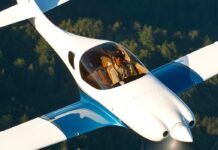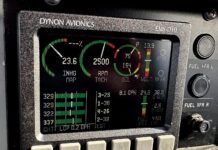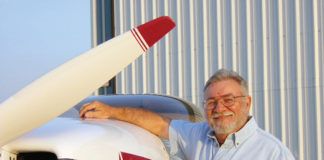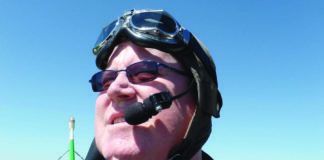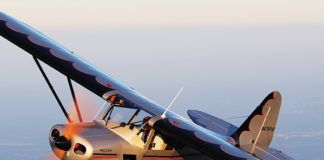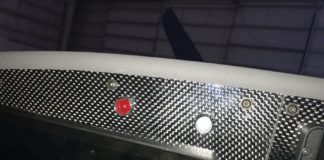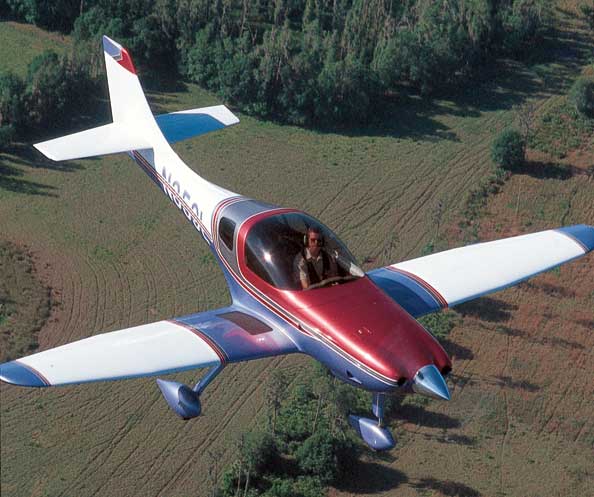
For a guy who lived just a few miles from where the original Glasair was built, it’s surprising that I’ve always had a secret admiration for its main competitor, the Lancair.
The Glasair always seemed like something I would have designed, had my collegiate inclinations leaned more toward airflows than electrons. It looked like it had been cut out of a block of mahogany and lovingly shaped by rasp and sandpaper into something that not only looked good, but was as fast as blazes.
The Lancair, on the other hand—well, that’s not something I would have thought of. I’ve always thought that the original Lancair looked like it started with setting two seats side by side, a canopy above, a couple of suitcases behind, with an engine up front. Then they wrapped the whole thing in fiberglass and resin and plumbed in some vacuum from a convenient black hole. Every square inch of excess surface area disappeared past the Schwarzschild radius, leaving just the smooth wasp-waisted shell of the fastest homebuilt that ever rolled out of a proud builder’s garage.
Sexy, sure, but how safe? From the day I started my analysis of homebuilt accident causes, the second question I’m always asked is, “How does the Lancair come out?” Bad publicity has dogged the glass ships from Oregon, from problems related to certification of the first Australian-built examples to a recent FAA warning about the Lancair IV. So for this second in a series of in-depth looks at homebuilt aircraft accident statistics, let’s dive into the Lancair’s record.
(By the way, the first question I’m asked when talking to folks about homebuilt accidents? “What’s the safety record of the homebuilt design I’m building?”)
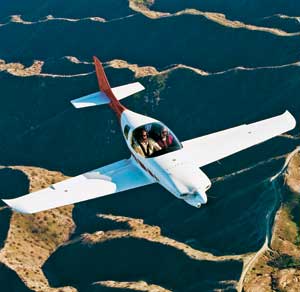
Lancair 235.
Picking the Models
When examining Lancair safety, we’re going to look at three basic categories: “Lancairs (All),” which includes any homebuilt with a Lancair name tag, “Lancair IV,” covering all variations of the basic four-seat Lancair IV including the IV-P and the turbine-powered variants, and “Lancairs (Two-Seat).”
The last category includes accidents involving Lancairs from the original 1980s Lancair 200 to today’s Legacy. Lancair has taken considerable effort to improve the breed, so it’s a tad unfair to combine the early and late designs. However, the number of accidents of the individual models is so low as to make comparisons difficult. There are just seven Lancair Legacy accidents in my 10-year database (1998 to 2007), thus each accident is worth 14 percentage points. The sample size for the individual models is too low, but by combining them, we get enough accidents (55) to try to generate some meaningful statistics.
Pilot Error
There are two factors in Pilot Error: mistakes involving stick-and-rudder skills and errors involving risk management. The first type of error I call “Pilot Miscontrol.” A typical example would be a ground loop, stalling on initial climb, undershooting the landing, etc. This is the primary area in which one should detect problems if the Lancair is a more challenging aircraft.
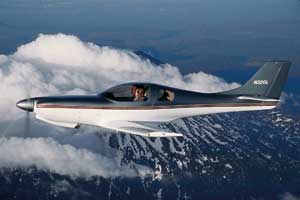
Lancair 320.
“Risk Judgment” pilot errors are those that involve the pilot’s planning or decision-making ability—continued VFR into IMC, buzzing, fuel exhaustion, etc.
So how do the Lancairs come out? On the surface, not so well. The rate of Pilot Miscontrol for all homebuilt crashes is 39.2%. “All Lancairs” check in at 44.6%, five percentage points more. Lancair IVs come in slightly above, the two-seater slightly lower.
But check out Figure 1, which compares Lancair Pilot Error against several common homebuilts. The dark blue bars are the Pilot Miscontrol rates. All categories of Lancair have a lower rate of Pilot Miscontrol accidents than the Van’s Aircraft RV-6A!
There is a bit of an extenuating circumstance involved here, dealing with the nosegear controversy previously described in the KITPLANES article on Van’s RV safety (July 2010). But the Lancair line surely isn’t alone in having a higher-than-average rate of Pilot Miscontrol.
Look at the rate of Risk Judgment error in the Lancairs…quite a bit better than most of the other models. When Pilot Miscontrol and Risk Judgment are combined into the Overall Pilot Error statistic, we find that the Lancair series has a lower overall rate of Pilot Error than several common homebuilts.
The pilot experience at the time of the accident was an interesting combination. The median total pilot hours for two-seat Lancair accidents was slightly lower than the overall median (890 vs. 951). However, the typical Lancair IV/IV-P pilot had more than twice as many hours (median 2390 hours). Pilots in both types of Lancair had a median of about 100 hours time-in-type, versus a median of 59 hours for the overall homebuilt fleet.
Stalls and the Lancair
The FAA issued a warning about Lancair IVs in March 2010, which included a reference to the airplane’s high stall speeds. It’s perfectly true that the Lancair IV stalls at speeds higher than most single-engine general aviation aircraft. It’s also true, as the FAA mentioned, that builder variation can affect both the stall speed and the stall characteristics. But the Lancair IV’s stall statistics aren’t that far out of line.
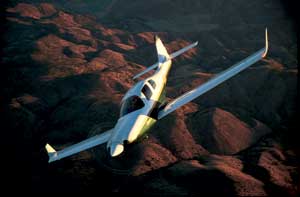
Lancair IV-P.
A stall or similar loss of airspeed control happens in about 18% of all homebuilt accidents, including those caused by the pilot inadvertently stalling during normal operations and when the pilot is maneuvering after a major failure (such as an engine out). The Lancair IV rate is nearly identical.
Looking at accidents involving fatalities, about 34% involved stalls, and, again, the Lancair IV was roughly similar. (Roughly because of the difference in sample size. The Lancair IV scored a little better both times, but because there were only 32 Lancair IV accidents in my database versus more than 2100 overall, one Lancair accident more or less has a greater impact on the results.)
However, a darker trend is apparent when we look at cases where the actual trigger of the accident was the pilot’s lack of airspeed control. When Pilot Miscontrol was the cause of the accident, 26% of the Lancair IV cases involved stalls, versus about 17% overall. About the same number of percentage points separate the cases where fatalities occurred.
These results say that Lancair IV pilots are more likely to stall a plane during normal operations, but less likely to stall an airplane during an emergency. This implies that pilot inattention, rather than lack of skill, might be a factor in the pilot-error stall cases.
The two-seat Lancairs displayed a greater percentage of Pilot Miscontrol accidents involving stalls…almost 30% versus the 17% overall. The difference is even more significant when fatal accidents are examined: Two-thirds of the fatal accidents caused by Pilot Miscontrol involved stalling. Most of them happened on takeoff.
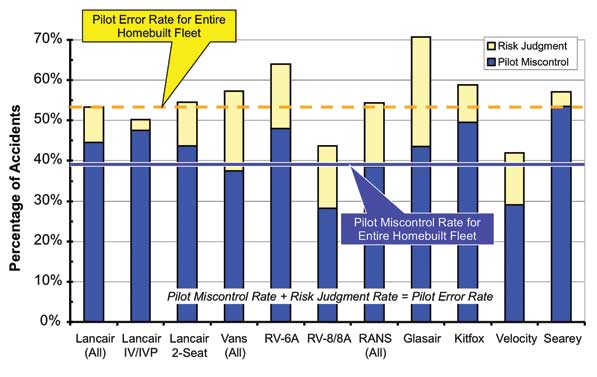
Figure 1: Lancair Pilot Accident Rate.
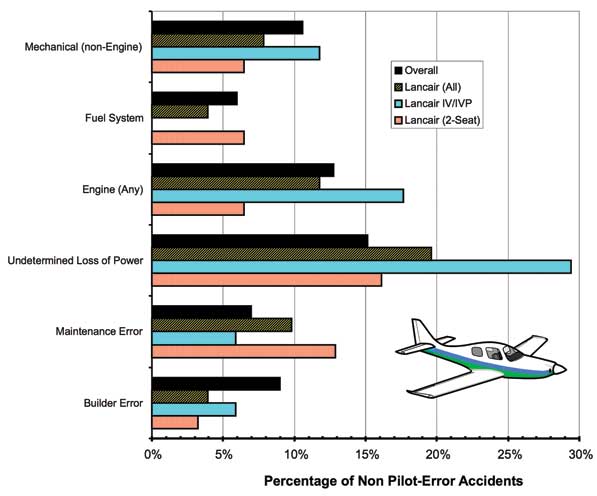
Figure 2: Accident Causes.
Other Accident Causes
Figure 2 shows the relative rate of occurrence of accidents that do not involve Pilot Miscontrol. The Lancair series is pretty close to the overall homebuilt rates, but the Lancair IV line seems to stand out in those categories related to engine failures.
Most of the Lancair IVs involved in accidents carried Continental engines, though eight had turbine engines (and the turbine engine was the cause of the accident in three of these cases). Is there something about the installation/operation of engines in the Lancair IV line that causes a higher occurrence of engine failures? (See Figure 5.)
Remember, the NTSB defines an “accident” as an event “…in which any person suffers death or serious injury, or in which the aircraft receives substantial damage” (NTSB Part 830). An engine failure, in itself, does not make an event an accident. Lose an engine on a Kitfox (stall speed 44 mph), and there’s probably a number of places one can set down safely and not meet the criteria for inclusion in the NTSB records.
A Lancair IV pilot, with the plane’s 75-mph stall, has remarkably fewer options for an emergency-landing site. And with an airplane worth a quarter-million dollars, it doesn’t take much roughness to inflict the “substantial damage” that would place the day’s excitement in the NTSB records.
My guess is that the higher rate of reported engine problems is probably a reflection of the characteristics of the airplane rather than an indication of problems with the engine or installation. Lancair IV performance is roughly equal to that of a Curtiss P-40. Even experienced wartime pilots were challenged to land their fighters deadstick without damage, and it seems logical that the Lancair’s apparent greater incidence of engine problems reflects the fact that it’s more difficult to find a good place to set one down if the engine quits.
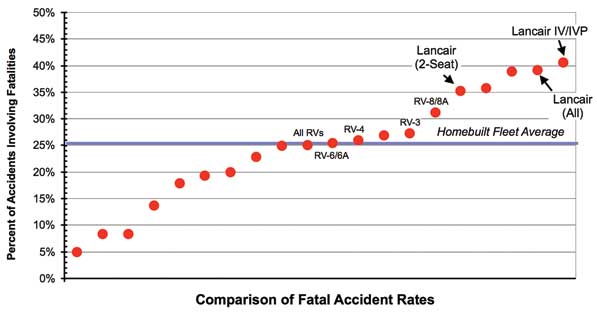
Figure 3: Fatal Accident Rate Comparison.
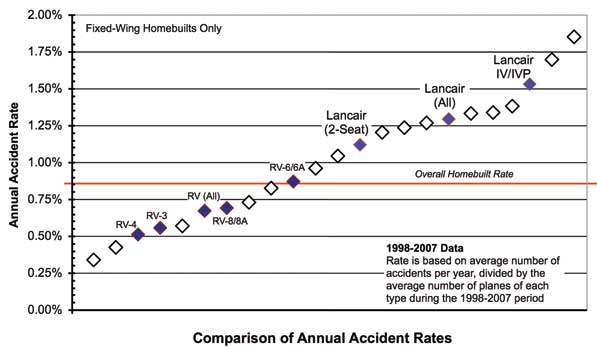
Figure 4: Overall Accident Rate Comparison.
Fatal Accidents
The higher speeds may also be related to the higher rate of fatal accidents. As Figure 3 shows, about 40% of Lancair IV accidents result in at least one fatality. The amount of energy that must be absorbed in a crash is proportional to the square of the speed; a plane hitting a tree at 80 mph packs 75% more energy than the same plane hitting at 60 mph. The percentage of fatal IV accidents that happen in the approach, descent or landing phase of flight is almost twice that of the overall homebuilt fleet. Two-seat Lancairs have results close to that of typical homebuilt accidents.
While the theory regarding higher approach speeds is attractive, it is not wholly borne out by the data. One of the two data points between Lancair (All) and Lancair IV/IV-P is a series of aircraft that meet the definition for Light Sport.
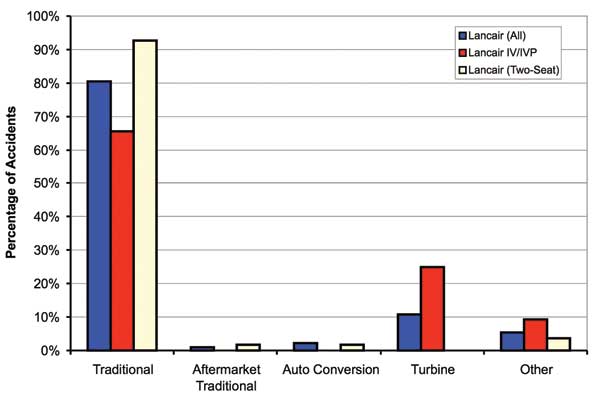
Figure 5: Engine-Related Accidents.
Overall Accident Rate
The overall accident rate is high for Lancairs, but it is not the highest. As Figure 4 shows, both varieties score in the upper range for the average annual accident rate (i.e., the number of aircraft that crash in a year divided by the total number of registered examples). So while their overall Pilot Error rate is lower than the RV-6A, the proportion of the Lancair fleet lost due to Pilot Error every year is higher.
Wrap-Up
Flight is a compromise. If you want an airplane to land slow, you need less weight and a bigger wing. If you want a plane to go fast, you want a smaller wing and a bigger engine. Wings can be reconfigurable to make them work better at both ends of the speed spectrum, but there’s only so much that can be done with Fowler flaps, leading-edge slats, etc., and those complicate the construction for amateur builders.
There’s no real safety impact in designing a plane to land slow, but a fast ship is going in harm’s way. An engine glitch in a Zenith CH 701 might be worth a good story at the pilot’s next EAA chapter meeting. A stopped prop in a Lancair IV-P is going to be more nerve-wracking, especially when you consider that fast cross-country airplanes spend more time between airports, flying in weather, more exposed. Pilot training is always important, particularly so with a fast, capable airplane.

![]()
Ron Wanttaja is a systems engineer, engaged in satellite orbit/constellation design and analysis, launch vehicle and onboard propulsion system trades, and operations concepts for space systems. He worked on the early design studies for the International Space Station.



